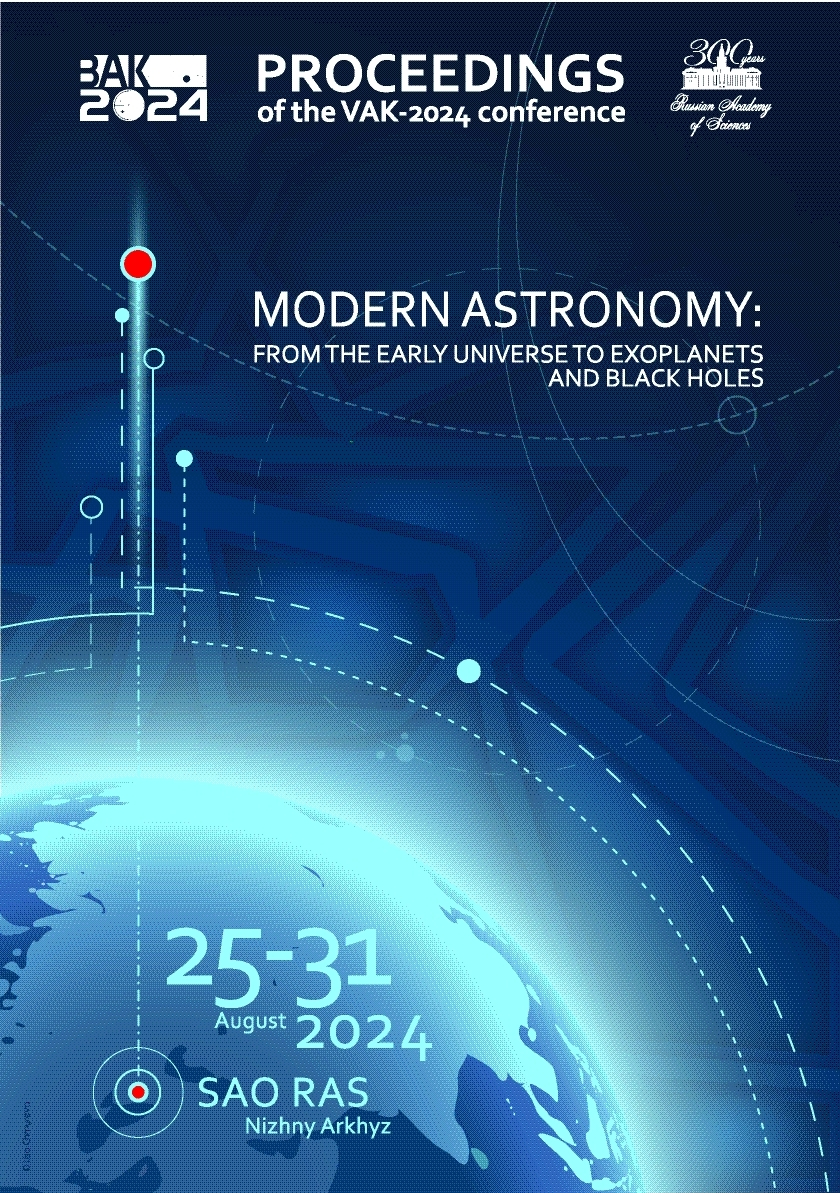VAK Russia 1.3.4
VAK Russia 1.6.9
UDC 523-1/-8
UDC 52-423
UDC 52
UDC 53
UDC 520
UDC 521
UDC 523
UDC 524
UDC 52-1
UDC 52-6
CSCSTI 37.00
CSCSTI 41.19
CSCSTI 41.00
CSCSTI 29.35
CSCSTI 29.31
CSCSTI 29.33
CSCSTI 29.27
CSCSTI 29.05
Russian Classification of Professions by Education 03.03.03
Russian Classification of Professions by Education 03.05.01
Russian Classification of Professions by Education 03.06.01
Russian Library and Bibliographic Classification 223
Russian Library and Bibliographic Classification 2
Russian Trade and Bibliographic Classification 6144
Russian Trade and Bibliographic Classification 614
Russian Trade and Bibliographic Classification 6135
BISAC SCI004000 Astronomy
BISAC SCI033000 Gravity
BISAC SCI032000 Physics / Geophysics
BISAC SCI005000 Physics / Astrophysics
Using an eigenvector and signal component analyzer (eigenoscope), the problem of identifying the impact of gravitational waves of relativistic binary star systems (RBSS) with large and small eccentricity on the vertical component of the electric field strength ($E_\text{z}$) in the Earth's atmospheric surface layer in the infra-low frequency (ILF) range at high harmonics of the EDS circulation frequencies has been solved. The results were obtained using monitoring data at four spatially separated $E_\text{z}$ observation stations. A model is proposed to explain the effect of the gravitational wave influence of relativistic binary star systems on the vertical component of the Earth's electric field strength in the surface layer of the atmosphere, previously discovered by the authors. The model considers as the mechanism the disturbance of the Earth's orbit by gravitational waves from relativistic binary star systems, leading to small displacements of the Earth relative to the free space charge in the troposphere. The estimates of the amplitude of the $E_\text{z}$ components, spectrally localized at the frequencies of gravitational waves of relativistic binary star systems, obtained on the basis of the presented model do not contradict the experimental results.
gravitation; gravitational waves; Earth; (stars:) binaries: general; relativistic processes; atmospheric effects; methods: statistical
1. Grunskaya L., Isakevich V., Isakevich D., 2023, Gravitation and Cosmology, 29, 3, p. 283
2. Grunskaya L., Isakevich V., Isakevich D., et al., 2014, Space, Time and Fundamental Interactions, 2, p. 54
3. Grunskaya L., Isakevich V., Isakevich D., et al., 2013, Space, Time and Fundamental Interactions, 3-4, p. 117
4. Isakevich V., Isakevich D., Grunskaya L., 2011, The signal eigenvectors' and components' analyser, RU116242U1, 20.05.2012
5. Isakevich V. and Isakevich D., 2017, Signal eigenvectors' and components' spectrum analyzer, RU178399U1, 03.04.2018
6. Zel'dovich Y. and Novikov I., 1975, The Structure and Evolution of the Universe, Moscow, Nauka





